Unlike a memory, nostalgia is never fleeting. It’s deep, creating a dent that never leaves you. It’s what makes you re-visit the people and places you love, again and again.
My nostalgic trips always include Goa. This time, I reflect on how the adults at home and in the neighbourhood, waited for Fridays with bated breath. Because Friday was when everyone got ready for the weekly shopping expedition to the Mapusa market. We kids rarely got to go. However, we had the pleasure of anticipation; when we could tear open the goodies they brought back, tied in old newspapers. The pre-monsoon shopping trips were the most exciting. This is when my mother accompanied ‘pissu mana’ (our cook/kitchen help/story teller) to Mapusa to buy, what folks call ‘purument’ (The word is derived from the Portuguese word ‘purumento’, meaning provision) for the entire monsoon season. People in Goa, fully aware of the fury of the monsoons, make provision for this season well in advance: Dried Kashmiri chillies, round balls of tamarind encased in grains of salt, garlic and onions, which were braided and then hung on a horizontal stick in the kitchen, lentils and alsunde (black-eyed beans), ginger, which was stored in a jar of sand and, of course, condiments and spices, and plenty of dried fish, including ‘Galmo’ – miniscule dried shrimps. From dried fish was prepared ‘Molho’ and ‘Para’ – fish pickle that made every dish extra delicious! Everything was then re-dried and carefully stored in the storeroom. Not to be touched, until the fury of the first rains.
And the monsoons came riding on dark, ominous clouds that opened to gushing, unending sheets of rain that spared no one and nothing. Sometimes, it announced its arrival with loud claps of thunder and dazzling lightning that seared the air with its electric force. Small puddles and rivulets sprang up magically and sent us scurrying to make paper boats. Plants and grass sprang thick, and lush which transformed Goa to a gorgeous green. Frogs came out and sang in discordant unison. Nobody stayed home from school. We huddled in class, wet and wondrous – hoping to be sent home for the day! Monsoons was the only time we were forced to eat dhal (lentils) in our house. The fishermen took their well-earned rest during this time, glad to be safe from the savagery of the sea.
It happened to be Friday when Alan and I decided to visit Goa’s south, where the Goa of old is still visible. But first, we had to visit Mapusa’s famous Friday market, which spills and sprawls all around. Alan was spellbound by the avalanche of local produce sold by local aunties, sitting on their haunches or small stools, selling flowers from bamboo baskets, overflowing with chrysanthemums and marigolds, and other varieties of seasonal flowers. Flowers, fowl, fish and jackfruit, vied for attention amidst artistically displayed pyramids of jaggery. You could pick your pickle, and even pick a jar to store it in. Here, Bebincas and Bathicas teased your sweet tooth and there, Goa’s renowned spices – freshly ground Xacuti and fish curry masalas tempted your taste-buds. Woven and rolled-up bamboo mats and hand-made brooms stood like sentinels guarding the indigenous bright red pottery. It was chaotic and mesmerising. An unforgettable experience that tugged at our purse-strings, and heartstrings. We could have stayed immersed in the magical Friday market all night, but Goa’s scintillating south was waiting….
We were heading south to the famed Martins Corner in Betalbatim and Dominic’s Pork Centre in Varca. The landscape changed dramatically as we crossed the Zuari. The fields became lusher and greener, the coconut groves thicker, and the houses bigger and grander! The southern landscape here has the same lilt and tilt as their Konkani. Driving through the verdant, open countryside, I realize that south Goa has not sold its soul to developers, yet.
Our first stop was Dominic’s Pork Centre in Varca where we found the genial sausage maker. Doing brisk business, selling Salcete’s famous ‘rosary’ sausages and other types of sausages, which hung like giant necklaces from the ceiling, These famous links have found cooking pots all over the world. And Dominic is proud that loyal patrons come regularly for a taste of his masterpieces. Dominic’s shop is small, but his house, which he insisted we visit, is huge. Marble and rosewood everywhere. Dominic is as proud of his humble beginnings as he is of the sausages that he’s renowned for. The tasty sausages are freshly prepared everyday, in a shed right behind his house.
Our next stop was Martins, in Betalbatim. The walls of this restaurant are thick with photographs of famous cricketers and Bollywood stars. A social media post by Sachin Tendulkar, after he’d tasted their Goan Balchão, scored them many guests. Today, Martins Corner is a must-visit place for many who seek authentic Goan cuisine, and bragging rights. We were told by many that their prawn Balchão was to die for. The head chef is Mama Martins, the matriarch of the Martins family, who volunteered to prepare the balchao for us. An amiable lady, who is obviously proud of how far her culinary talents have taken her and her family, she presided over her Balchão and stove with dexterity, and prepared the Balchão from scratch in her very modern kitchen. The Balchão was delicious, but just a tad too sweet for me. What I found even more delicious, however, was her story of how she and her husband built their hospitality empire from a small store, which provided a few Goan dishes for take-out. Mama and Papa Martins worked long and hard to build a roster of loyal customers. Today, they own a boutique hotel situated across from their hugely popular restaurant. Such a sweet and tangy success story – just like her Balchão. Check out for the prawn Balchão recipe in our Recipe Section.
We left the hustle and bustle of Martins Corner to visit Goa’s famous Acacio Pereira, the man with the melodious voice, for an interview for Radio Mango. A few winding roads, grand houses and coconut trees later, we arrived at Acacio’s pretty Portuguese styled house, nestled in a coconut grove. Peace seemed to pervade everywhere, with a gentle breeze bringing in a whiff of the sea, which is never too far away from anywhere in Goa.
As we head back to the Alcove Resort in Vagator, north Goa, I reflect on the oft-heard refrain among the nostalgic Goan diaspora: You can leave Goa, Goa never leaves you.
The next day, we did leave Goa for Karwar. Stay tuned for our next adventure.
For photographs go to the Photo Gallery tab above; likewise for recipes.
Other places to visit in South Goa:
Beaches:
• Agonda
• Benaulim
• Betalbatim
• Bogmalo
• Colva
• Cavelossim
• Galgibaga
• Majorda
• Mobor
• Palolem
Forts:
• Cabo de Rama
Falls:
• Dudhsagar
Wildlife Sanctuaries:
• Netravali
• Bhagwan Mahaveer
Churches:
• Holy Spirit Church, Margao
• Our Lady of the Mount, Goa Velha
Temples:
• Tambdi Surla, Mahadev Temple
• Shanta Durga
Portuguese Heritage:
• Figueiredo Mansion, Loutulim
• Portuguese Palace, Chandor
Best time to visit: November – March
Know your Konkan Coast

The Konkan coast runs south from Mumbai all the way to Kasargod. Quaint fishing villages and magnificent forts look out into the endless blue of the Arabian sea. Pristine beaches and coconut palm trees dot the coast all along, until you reach Malvan, the last beach town of significance, before the sands dissolve into Goa. The cuisine along the Konkan coast is as varied as it is delicious, greatly influenced by its geographic location, and layered history of the region. They are all intertwined yet distinct. Some patterns are common – like the seasons which influenced bottling pickles, and drying of fish and pork etc. The monsoon brought a lot of seasonal foods like bamboo, snails (conge) etc to the table. Coconut is an integral part of the Konkan cuisine. Apart from local influences, Portuguese and Arab influences had major impacts.



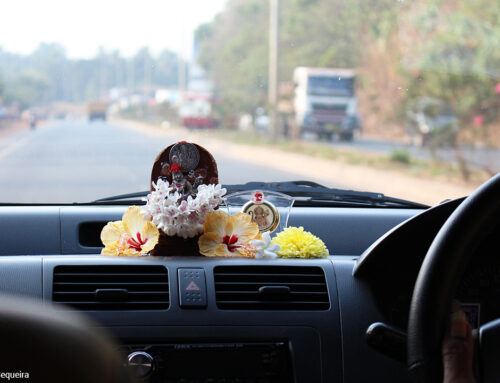
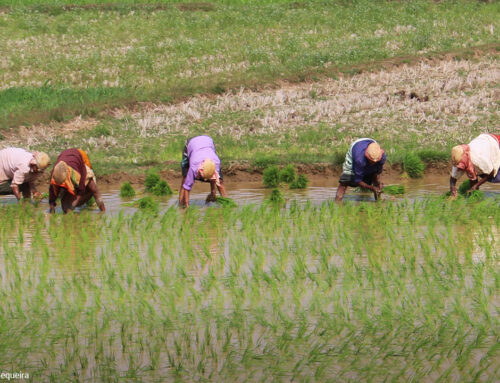

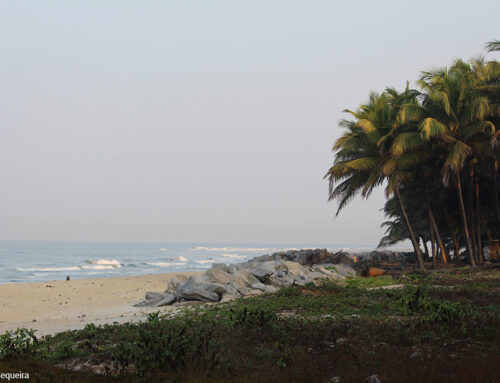
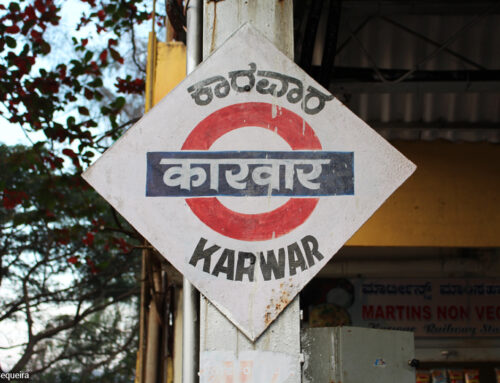
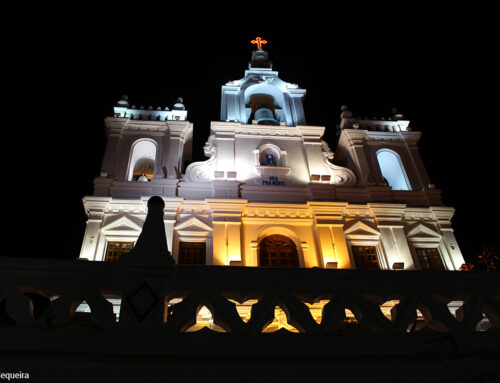
Bebincas and Bathicas…sounds wonderful.
For people who are not so familiar with Goan food can you please explain what are they …thx
As mentioned, Bebinca and Bathica are Goan sweets, with coconut as the main ingredient. Bebinca is a multi-layered cake, unique to Goa and therefore has earned the title ‘Queen of Goan sweets’. Bathica is also a cake, prepared with semolina and coconut.